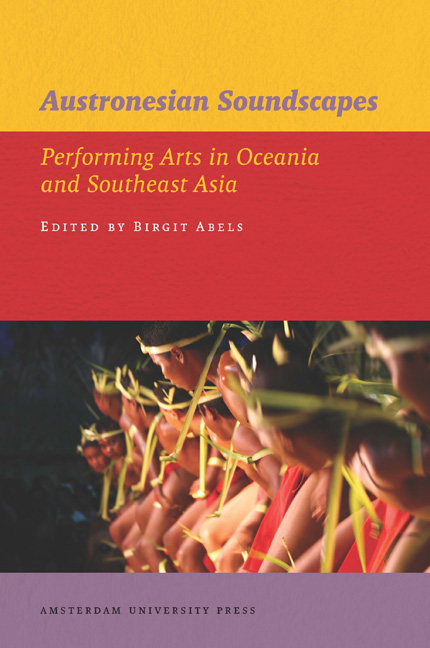2 - Sundanese Dance as Practice or Spectacle: It’s All Happening at the Zoo
Published online by Cambridge University Press: 20 January 2021
Summary
Introduction
Despite its scant 30 years of history, for most of that time jaipongan has been the emblematic ‘traditional’ dance of the province of West Java (Jawa Barat) in Indonesia and of the Sundanese culture that dominates the province. With lively, dynamic drumming accompanying dancers in colourful costumes, when presented on the ‘stages of the state’ (Widodo 1995), jaipongan easily captures the attention of non-Sundanese Indonesians and foreigners alike, yet manages to impart a distinctly Sundanese flavour as well. Jaipongan conformed well to the ideals of Indonesian cultural policy promulgated by Soeharto's New Order regime (1965–1998), which promoted the compilation of pan-Indonesian culture from the most attractive ‘peaks of culture’ of the many ethnic groups and regions that comprise the modern Indonesian nation (Yampolsky 1995). In New Order West Java, regional culture was perceived as a corrective to the negative effects of globalisation, but only when it was subject to appropriate ‘conservation, guidance, and development’ (pelestarian, pembinaan, pengembangan), and provincial government regulations outlined exactly how to accomplish this (Jurriëns 2004: 34-36).
Jaipongan has roots in ketuk tilu, which is an umbrella term for a variety of West Javanese social dance traditions. It is the Sundanese version of a dance genre, characterised by the free dancing of male audience members who interact with professional female entertainers, that is common to many Southeast Asian cultures. Ketuk tilu and kindred performance arts are not the peaks of culture the framers of Indonesian cultural policy had in mind because they are associated with illicit sexual behaviour on the part of the male participants and prostitution on the part of the female performers. In ketuk tilu, male participants are inspired to dance by the presence of lively, animating drumming and the beguiling voice and appearance of the female entertainers. In the process of transforming ketuk tilu from a social occasion to a stage dance, jaipongan choreographers succeeded in eliminating the appearance of bad behaviour by presenting a spectacle of dancing that emphasised virtuosic singing, dancing, and drumming, as well as visual splendour, with little opportunity for audience participation.
Nevertheless, jaipongan's sensual undertones – artefacts of its ketuk tilu roots – engendered considerable controversy in the genre's early years and continue to raise an occasional eyebrow among conservative Indonesians, even in post-New Order Indonesia.
- Type
- Chapter
- Information
- Austronesian SoundscapesPerforming Arts in Oceania and Southeast Asia, pp. 45 - 70Publisher: Amsterdam University PressPrint publication year: 2012



